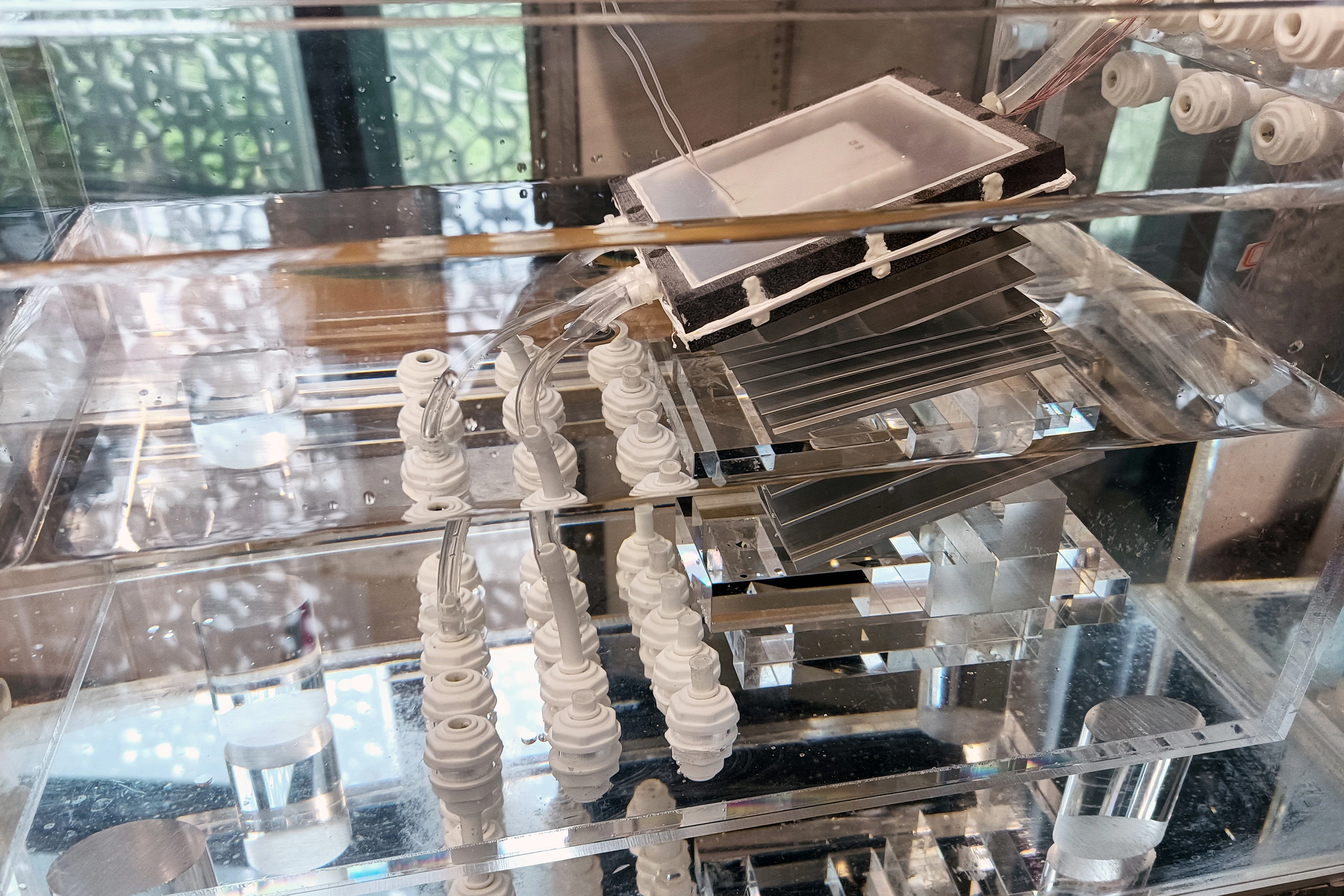Engineers at MIT and in China are aiming to turn seawater into drinking water with a completely passive device that is inspired by the ocean, and powered by the sun.
In a paper appearing today in the journal Joule, the team outlines the design for a new solar desalination system that takes in saltwater and heats it with natural sunlight.
The researchers estimate that if the system is scaled up to the size of a small suitcase, it could produce about 4 to 6 liters of drinking water per hour and last several years before requiring replacement parts. At this scale and performance, the system could produce drinking water at a rate and price that is cheaper than tap water.



It’s just a giant plastic bag. They catch the runoff with a giant cup.
As soon as I saw the words “powered by the sun” in the synopsis, I knew what this was. I learned this during survival training, it’s a great way to turn piss (or any other undrinkable water) into clean water. And yeah, all you need is some plastic and a cup. Let the water evaporate (power of the sun) and collect the droplets in something. Had no idea that needed a science paper.
Here’s the problem with desalination, tho: what do you do with the leftover super-brine? It’s pretty gnar stuff, like almost poison. Wide-scale desalination would produce tons of it every day. Most solutions i’ve heard are like “just dump it back in the ocean!” Which, yeah, how could that ever go wrong?
Did you read the article? You reject the slightly saltier water.
On a commerical scale the super brine may be economical to harvest the lithium. I know systems were getting close to being able to economically extract lithium from sea water. A more concentrated solution should make it easier.
Also, this would be distilled water? Or do they have some process to add the necessary minerals afterwards? I didn’t see anything about that. Because drinking distilled water isn’t exactly good for you.
There’s nothing particularly wrong with drinking distilled water as long as you are getting enough minerals and electrolytes from the rest of your diet.
True. However I would think that a system such as this would be used mostly in developing countries where getting all those minerals from your diet is not a given.
Exactly, imagine how much water can you gather in a hot climate that doesn’t evaporate untilyou get it or grow algae/fungi/protozoa/things that aren good for you.